World of Warcraft’s subscription model is destroying the game
And the community is wildly unhappy
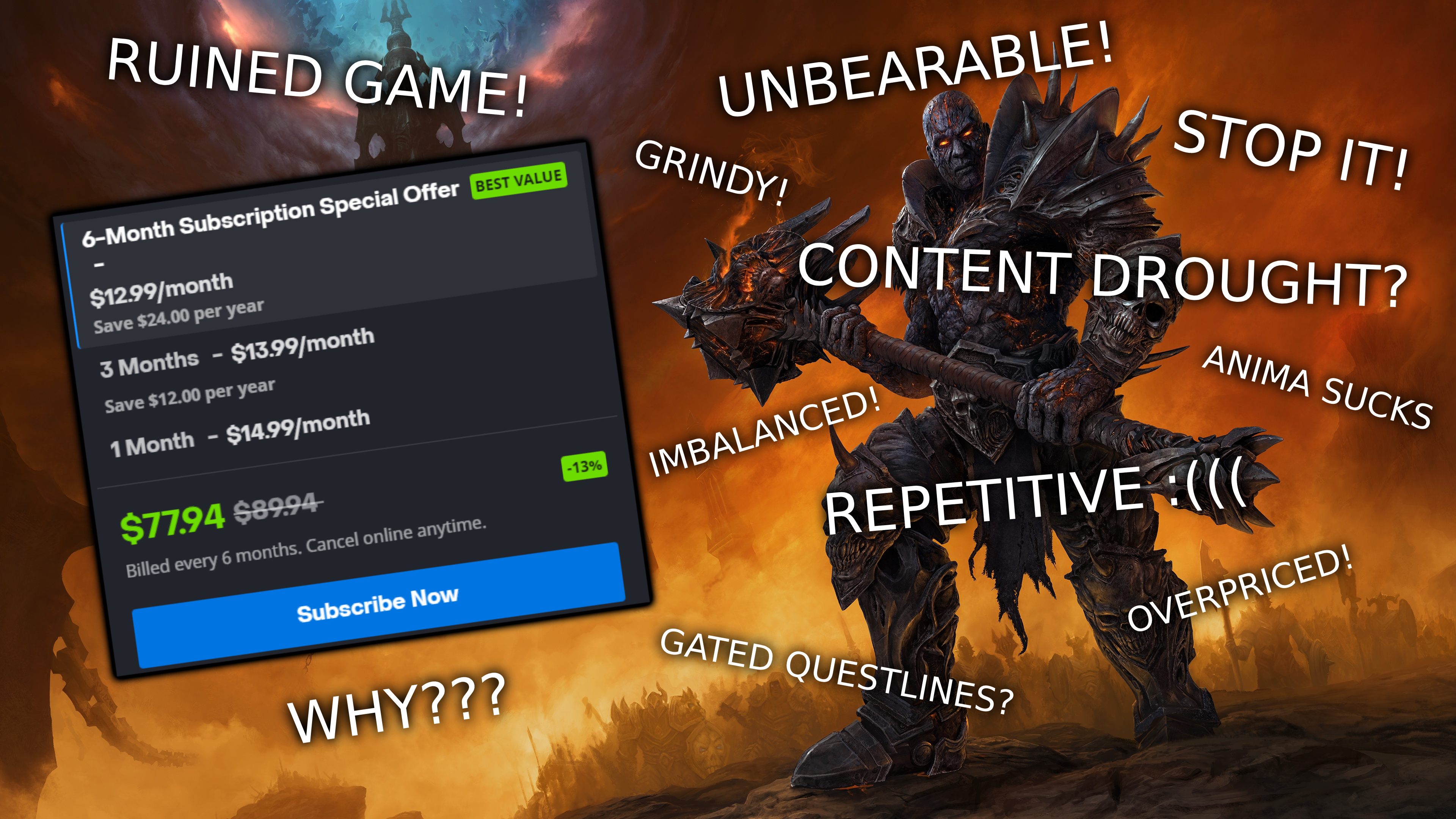
Since its launch in 2004, Blizzard Entertainment has charged a monthly $15 fee to play World of Warcraft. But with an expansion launching every two years, staying subscribed each month might not appear necessary. After all, you could just buy 30 days of game time at an expansion’s launch and complete everything it has to offer before unsubscribing.
Blizzard’s solution (which is commonplace for an MMO) is to launch patches throughout an expansion's lifetime. These often include storylines told throughout new areas, dungeons and raids. However, due to the infrequency of these updates, it’s not enough to keep players invested.
- World of Warcraft’s cross-faction update is a great idea: Here’s why fans are wrong
- World of Warcraft: Shadowlands’ endgame is not fun — Here's why
- World of Warcraft guide: How to start playing
Shadowlands Patch 9.2 (which introduces the Zereth Mortis area and Sepulcher of the First Ones raid) launched eight months after Patch 9.1, meaning players spent close to a year without any new content. This is commonly referred to as a “content drought” in the community, and considering Shadowlands only had two major patches before the end of its story, players had an ample excuse to unsubscribe.
Unfortunately, Blizzard Entertainment has found many ways to implement “hooks” over the years, each of which seem expertly designed to keep the company’s cash-siphoning claws lodged within millions of consumers. In Shadowlands, these patches don’t just introduce new areas, but they’re intertwined with a foundation that relies on grinding and time-gated progress.
The money we’ve lost
The upkeep for a World of Warcraft subscription is exorbitant. My mom and I have been playing on three accounts intermittently since 2008, and over the course of 14 years we have spent around $5,000. This is the equivalent of 83 full-priced video games, and since each new expansion still costs $40 (for each account), that adds around $1,000 to the cost over the course of eight expansions. We’ve also purchased more expensive versions of some of these expansions, so the money spent continues to skyrocket. World of Warcraft is one of my favorite games ever, but it’s hard to deny that the money I spend to stay up to date is frustrating.

When I bought Minecraft in 2010, I spent around $15. This is a game I revisit yearly and with the inclusion of incredible community mods, the experience could last a lifetime. The same can be said for Dark Souls, another one of my favorite games ever. I purchased it once for $60, and if I want to revisit it, I can just jump back in. Jumping back into World of Warcraft is nowhere near as simple, as it’s always coupled with the $180 I spend yearly on my account.
Those who want to avoid this subscription can engage with a free trial up to level 20 or purchase the Epic Edition of Shadowlands for $80, which provides 30 days of game time. But outside of putting it off for a short while, there’s no reasonable way to bypass this cost. You could grind anywhere between 150,000-200,000 of in-game gold to acquire a month’s worth of play time, but this is as arduous as it is time-consuming.
Sign up to receive The Snapshot, a free special dispatch from Laptop Mag, in your inbox.
The in-game ramifications
Yet after having spent so much money, it doesn’t feel like I’m engaging with a premium product. Instead, World of Warcraft’s business model seeps into the quality of the game itself. Blizzard Entertainment needs to keep players invested enough to retain a steady flow of monthly subscriptions. Shadowland’s time-gated endgame, repetitive daily quests, and grindy currencies can all be attributed to this business model. If the success of World of Warcraft wasn’t intrinsically linked to mechanics that trap the player, the developers would have no reason to structure the game’s foundation around a grind.
Daily and weekly quests time-gate players to prevent them from making too much progress at once. It’s to ensure they log back in every once in a while to claim their rewards, and when the structure ensures they only get the best gear after doing this for months, Blizzard guarantees more monthly subscription time from those addicted.
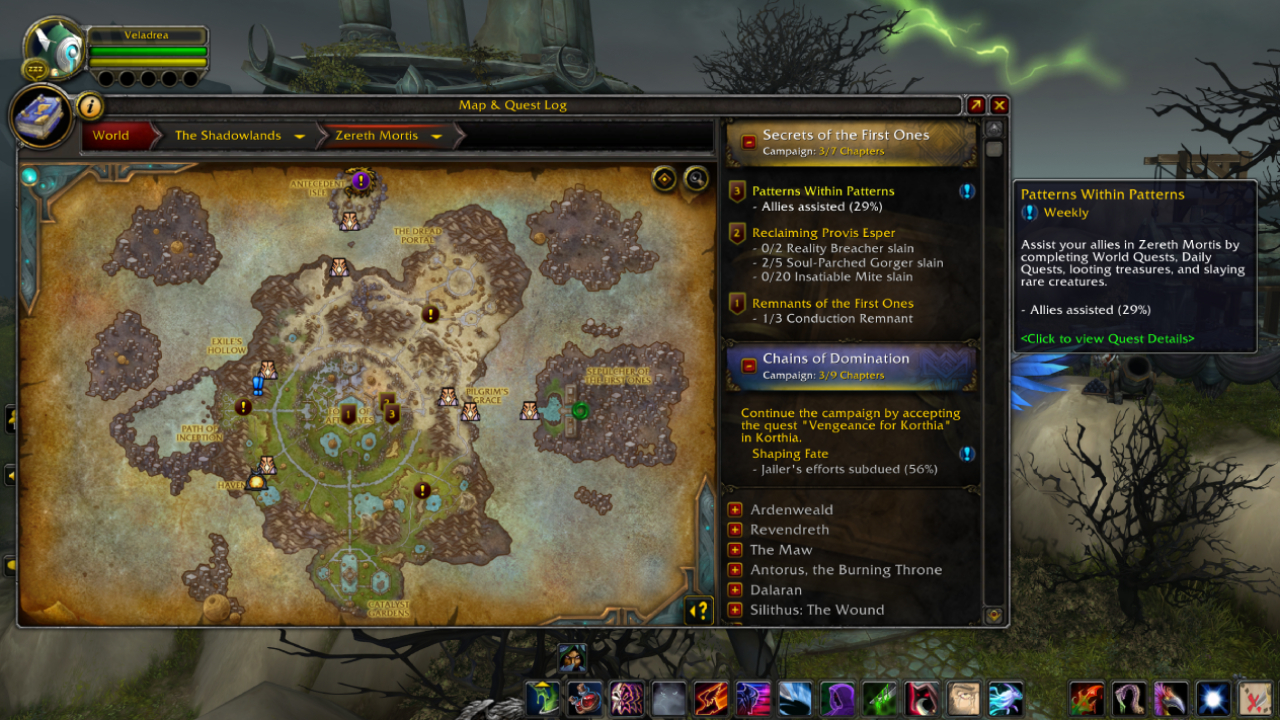
Covenants were introduced in Shadowlands, each of which offer unique abilities to those who join. And through a Renown currency, rewards are unlocked as players deepen their connection with them. However, these unlockables aren’t just cosmetic items. Each Covenant has a series of quests that push the narrative forward, but progression through them is locked behind this system. This wouldn’t be too bad if Renown was easily attainable, but players have to wait for weekly quests to be refreshed to gain more of the currency.
Admittedly, the way I engage with World of Warcraft is not ordinary: I do the newest expansion with one character, complete all the quests available, explore the new areas, do each dungeon and raid at least once, and then stop playing the game until it receives new content. Expansions have always been intertwined with grindy systems, but I’ve managed to avoid them, as the rewards (cosmetics and stronger gear) were never worth selling my soul (and time).
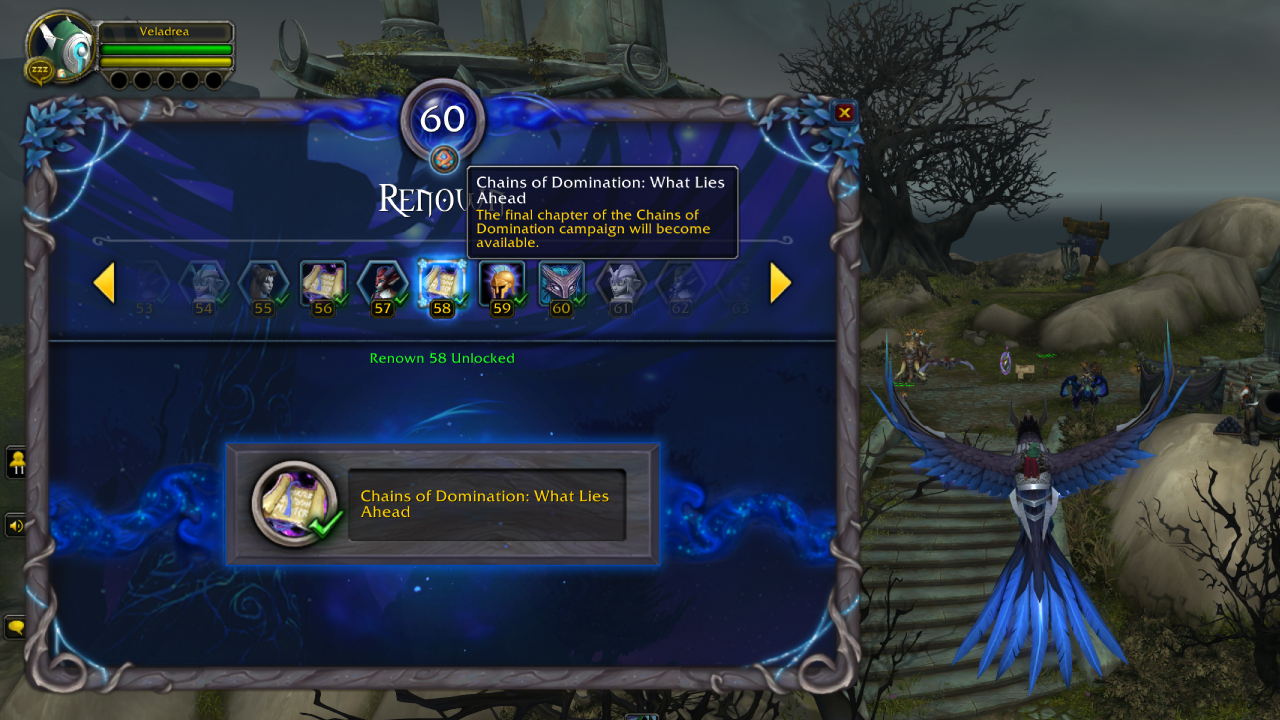
However, Shadowlands’ Renown managed to take one of my favorite things away from me. I was forced to grind weekly to continue the Covenant storyline. And when I finally finished it, the Shadowlands 9.1 update introduced Chains of Domination: A nine-part quest series that is also locked behind Renown. Even though I’m someone who loves questing, I’ve barely touched these yet.
Update 9.1 also introduced Korthia, City of Secrets. This is a small zone that is mostly made up of quests that refresh daily and weekly. Players need to acquire Research by finding artifacts in the area, killing special monsters, or completing rehashed objectives. With this Research, new bits of equipment can be bought and then upgraded (with their cost increasing exponentially). And higher tiers of Korthia gear are also locked behind Renown.
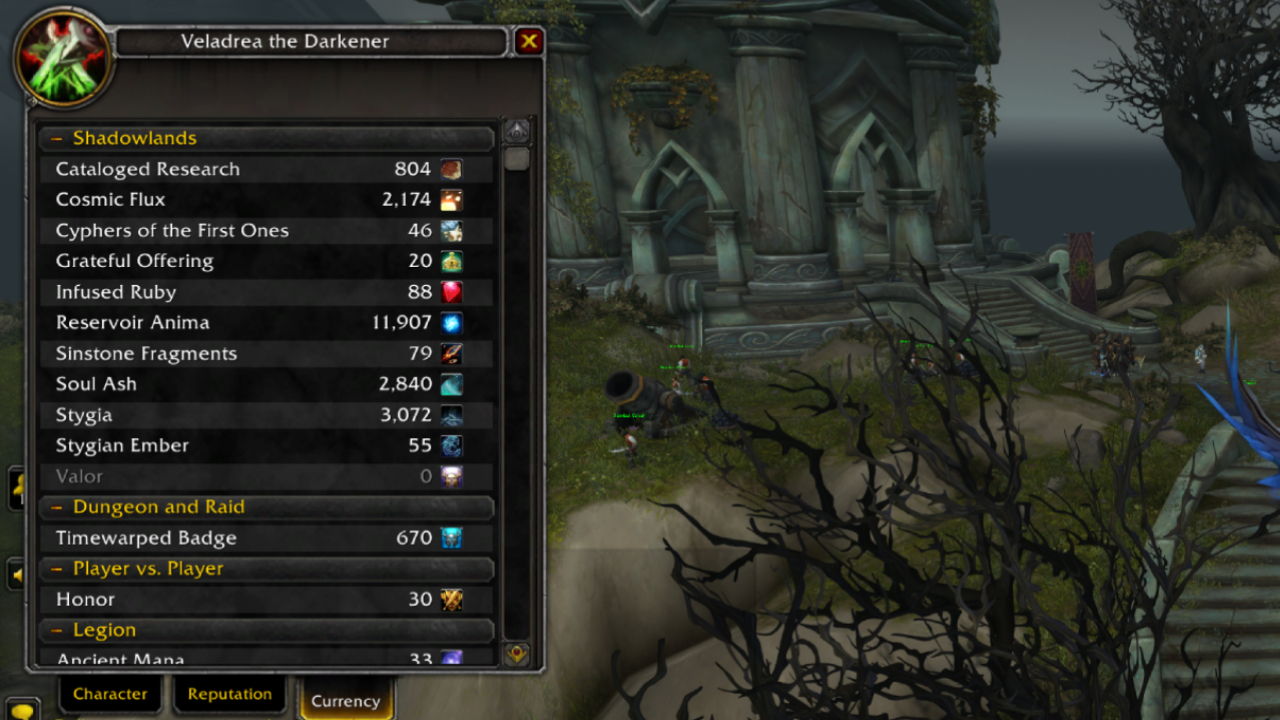
All of these systems are in service of Blizzard’s business model. It’s consciously designed to keep the player subscribed, but it ruins the game. World of Warcraft boasts an inspiring setting with awesome raids and dungeons, yet its core systems are grossly addictive without a satisfying payoff.
The community isn’t happy, either
I’m not alone in my discontent; the World of Warcraft community is unhappy about the current state of the game, and has been up in arms for many years now. With a little over 2,000 ratings, Shadowlands' user score on Metacritic is currently sitting at a 3.2 out of 10. The previous expansion, Battle for Azeroth, has an even lower 2.7 out of 10. World of Warcraft has been in a poor state in these last two expansions, and although there’s still a lot to love about the game, major changes need to be made when WoW 10.0 gets revealed on April 19.
After all, this isn’t the only MMO revolving around a subscription. Final Fantasy XIV has been wildly successful as of late, so much so that Square Enix had to temporarily halt sales as its teams expanded server size. Yet if we look at the state of its game, the company hasn’t resorted to cheap ways to guarantee continued subscriptions. Final Fantasy XIV's latest expansion, Endwalker, is currently at a 9.4 out of 10 user score with 1,300 ratings on Metacritic. Obviously, these scores aren’t the ultimate determinator in measuring community satisfaction, but it works to illustrate the point that people are upset.
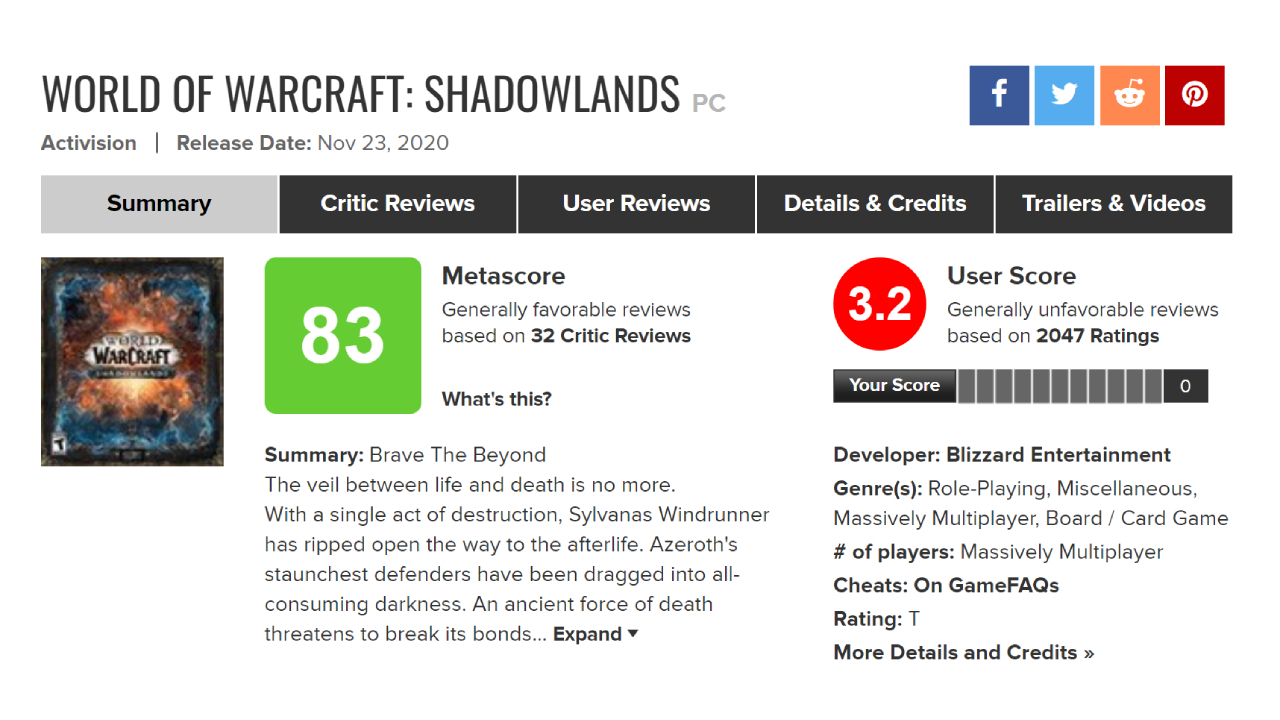
Whereas Final Fantasy XIV keeps players subscribed with frequent high-quality content, World of Warcraft has resorted to an awful endgame grind for years. Subscription-based games will always feel overpriced, but if players are going to pay a premium, Blizzard Entertainment shouldn’t use its subscription as a way to lure players into an addicting, but shallow foundation overwhelmed with chores.
Is there any hope?
Blizzard Entertainment strides a fine line between profitability and quality. Players still enjoy the content enough to keep playing (which is clear due to the behemoth’s 18-years of success), but they’re wildly unhappy about the current state of the game. And although World of Warcraft’s subscription is part of the problem, that’s only because of how the company approaches it. Blizzard could easily strip the game of its awful grind, but that’s a risky business move.
World of Warcraft relies on its monthly, $15 subscription. And it’s much harder to pack each expansion with meaningful content than just introduce a dozen currencies and equipment that are only attainable from months of constant playing.
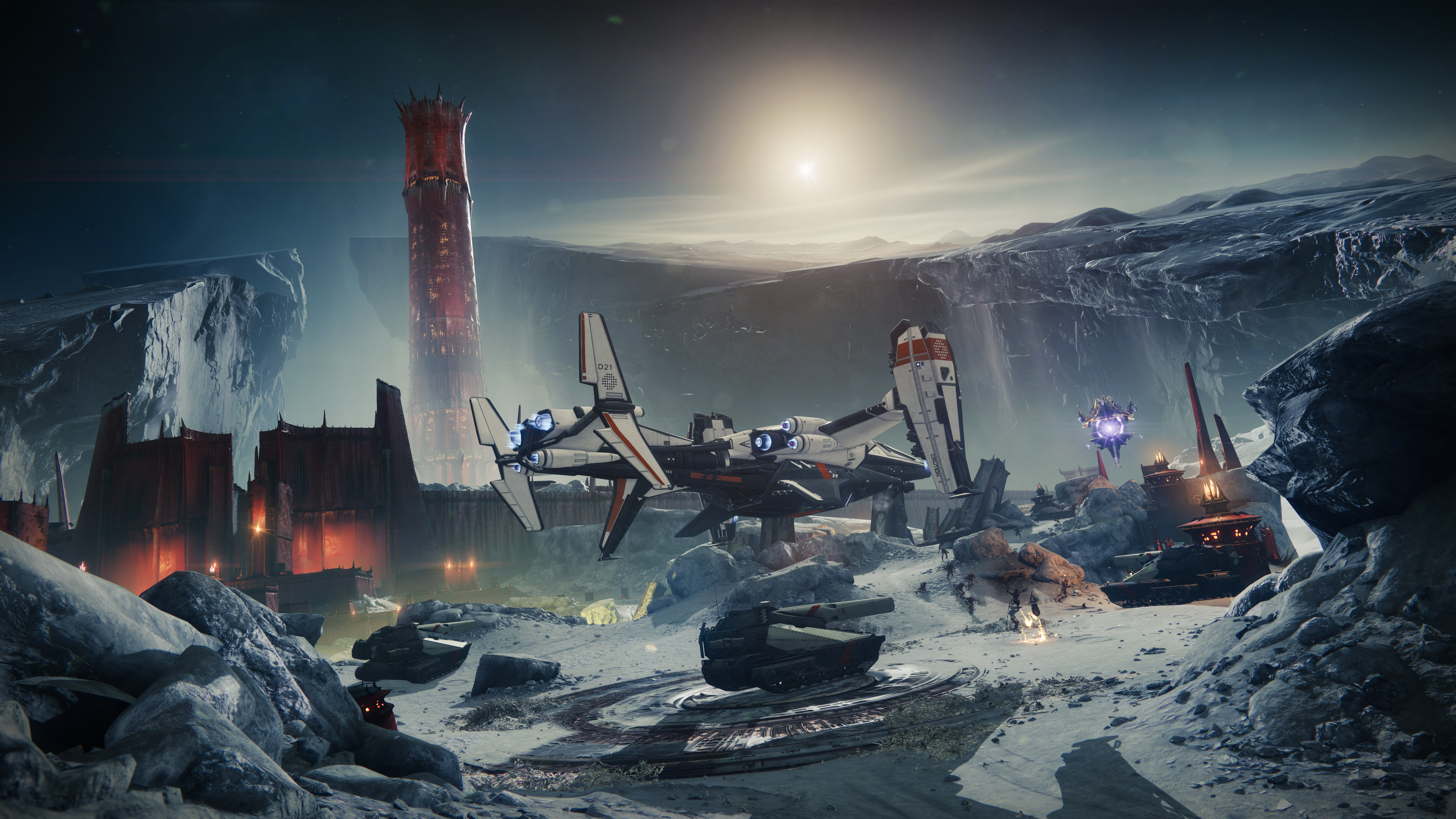
But what are the alternatives? Other MMOs have become more comfortable abandoning subscriptions for a free-to-play system, with Destiny 2, Guild Wars 2, and Lost Ark being a few examples. This also has its downsides, though, as it often results in a harsher economy that encourages the player to purchase individual items with real money, usually at a considerable cost. Silver can be purchased in Destiny 2 to unlock new Seasons, and Lost Ark has expensive Starter Packs with plenty of Crystals to unlock in-game shop items.
Blizzard probably won’t shift gears unless it knows that an alternative will guarantee an equal or greater amount of money flowing in. Lowering the price of a subscription certainly won’t achieve that (even though that’d be very welcome), and going free to play is probably too risky. Our greatest hope lies with Xbox, as the recent acquisition of Activision Blizzard by Microsoft could lead to something promising.
Bottom line
Blizzard Entertainment will probably never change World of Warcraft’s business model. Paying $15 a month is absurd, but why would the company stray away from what works? I could scream about how the game’s subscription cost should be far lower, but when idiots like me are still willing to throw money at the company to retain access to the game we love, there’s no way things will ever get better.
But if I’m going to dish out that much cash every year, the content should reflect the amount of money millions of players are spending. Instead, Shadowlands is plagued by gated questlines, grindy areas, too many currencies, and half-year-long content droughts.

Self-described art critic and unabashedly pretentious, Claire finds joy in impassioned ramblings about her closeness to video games. She has a bachelor’s degree in Journalism & Media Studies from Brooklyn College and five years of experience in entertainment journalism. Claire is a stalwart defender of the importance found in subjectivity and spends most days overwhelmed with excitement for the past, present and future of gaming. When she isn't writing or playing Dark Souls, she can be found eating chicken fettuccine alfredo and watching anime.
